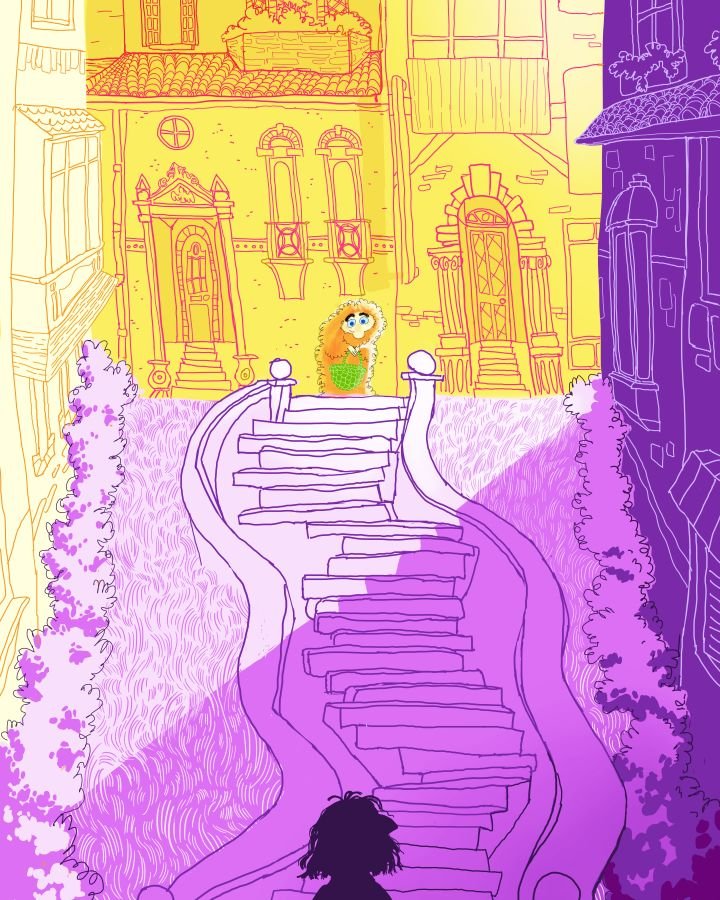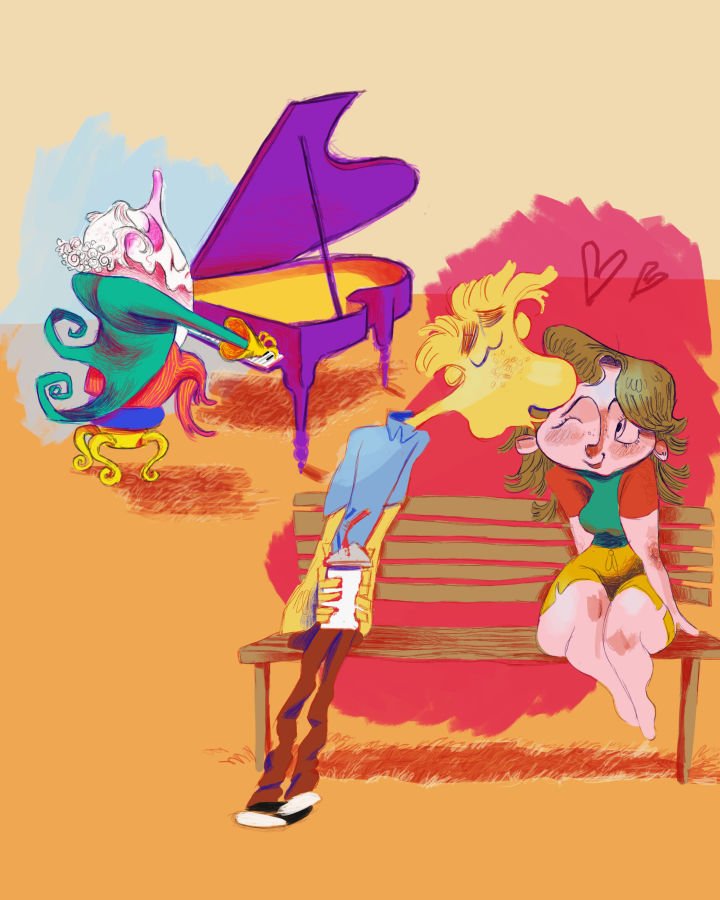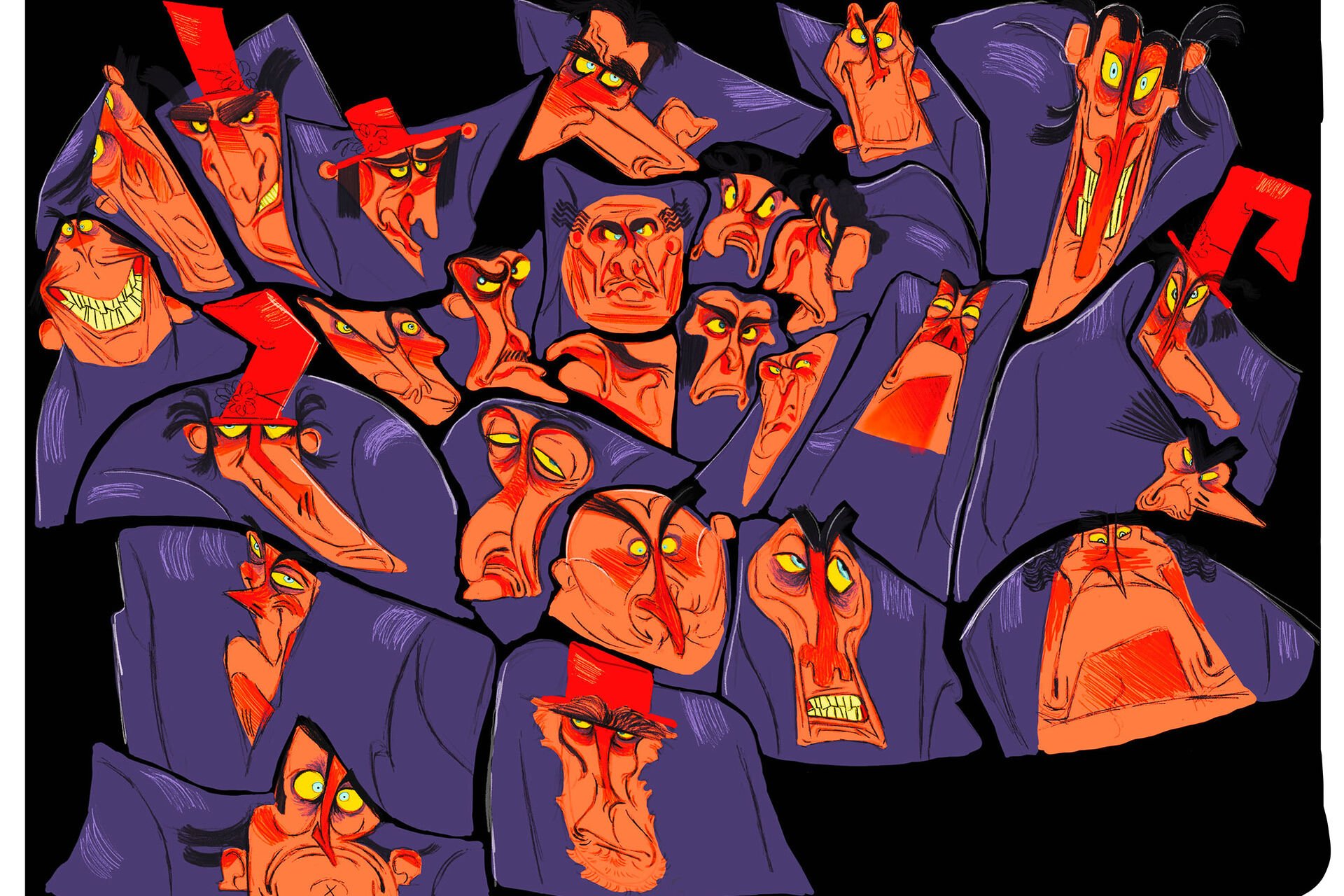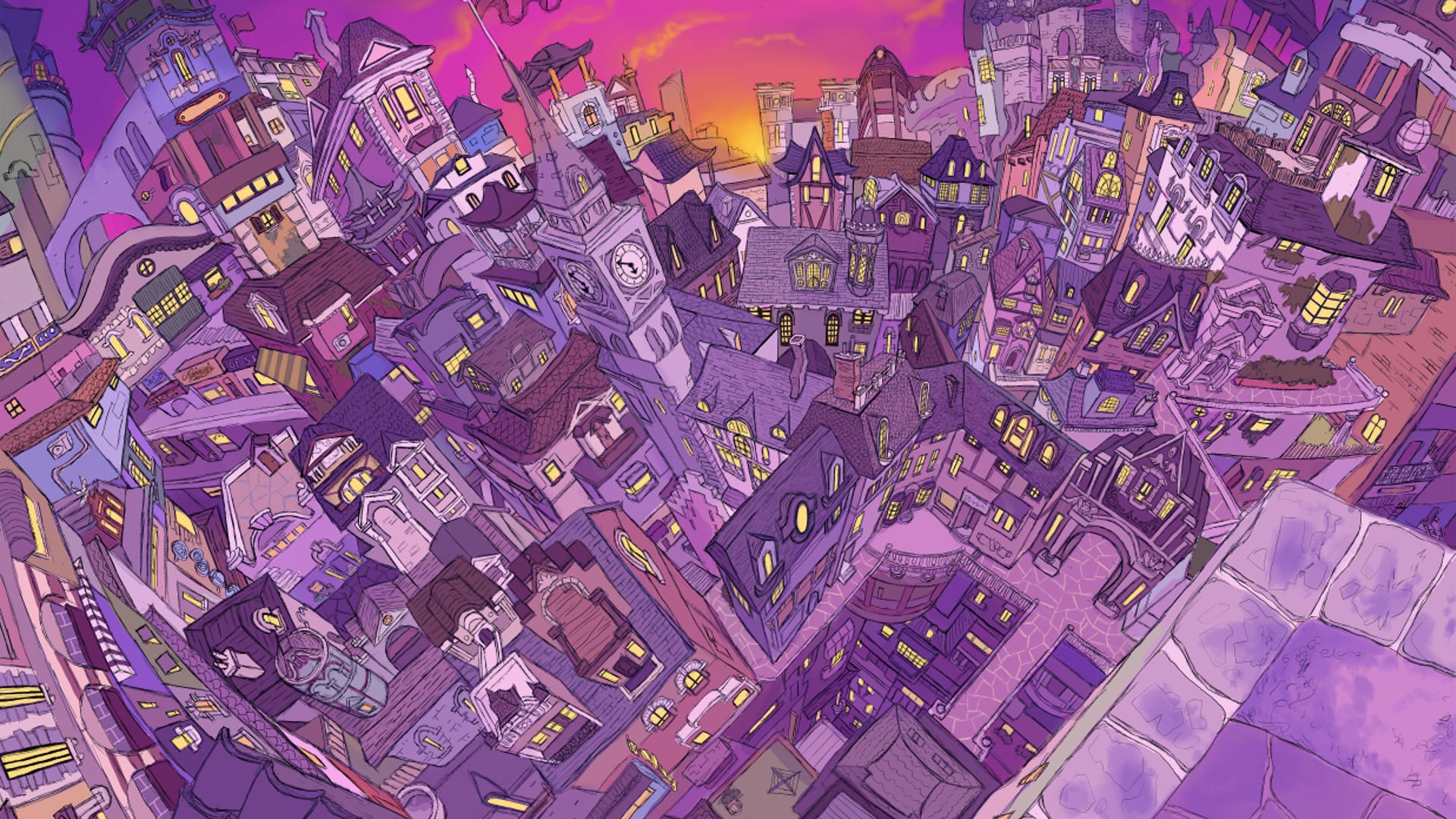Our 20s are naturally so chaotic and messy. Trying to figure out where you belong on this floating rock, while conforming to the rat race, societal norms and the rigid structure of doing well in uni, saving up, and then graduating with a good job can be draining. Two long-term flatmates, Sevin & Kim, sit down for a cosy chat to ultimately unpack whether this has been the 27-year-old animator’s reality.
Sevin: There’s a struggle with creative employment; it’s the hardest sector to be recognised in — not because of the industry itself — but because society has put pressure on it. You can be an average engineer or an average lawyer, and still find employment. But with animation and other creative industries, you almost have to be the best. And if you’re not the best, you’re literally scraping for weekly paychecks or barely surviving on the money you’re making. And I feel that pressure on creatives to make a living takes away from the art sometimes. Or it might restrict them to not take risks because they’re already struggling. If there’s a chance that people might not like it, they’re not stepping outside their comfort zone, which is a big part of what the creative industry should be and is.
Kim: Yeah, it’s a bit weird for me as a character designer and animator, because if you want a studio job, I think you’re fairly right when you say that you’ve got to be really, really good if you want to make it in the industry. And more importantly, you’ve got to really love what you do. When something is more artsy or design-based, there are endless possibilities in terms of visuals, but you’ve got to conform a lot of the time if you’re working on a cohesive team project. The challenge becomes to try and stop your weirdness from coming out. You have to be a chameleon. You’ve been working all these years to develop your own unique style as an artist — something that’s gonna help you stand out — but when it comes time to work at an actual studio job, you’ve got to adapt. You need the creativity to make characters look unique, appealing, and have their personality shine, while designing within the confines of a pre-existing established style. At least that’s the case in the early stages of your career. It’s still fun though! You’re still drawing for a living which is pretty sweet.
Sevin: You’re leaving out your own little creative expressions and stylistic choices.
Kim: Exactly, at my job last year, they gave me references to the style of the show. So, I would draw something, submit it, and then they would give me notes like, “This little toe or this bit of hair is a bit out of style, so if we could just adjust that...” So ironically, in a way you’ve got to kind of try and stop your uniqueness from showing (laughter). But when it comes to freelancing, what I’ve found is that it’s pretty much the exact opposite. The catch is that it can be much more unreliable, until you’ve gained steady income.
Sevin: For sure; it’s not guaranteed to be consistent.
Kim: Yeah, it’s where you’d really want to stand out and do something really unique and interesting to catch attention. But as I’ve found, that can take a while. Maybe once you have it, you’ve got the freedom to really bring your own energy, eccentricity and flair. Sometimes clients will come to you for your specific style, and other times they’ll already have something in mind. In my experience, that’s usually how it is for an artist in the animation field, especially early on.
There’s a lot of conforming until you’ve gained a following or built your own reputation and connections. Then people will begin to see your signature style, and they might start to gravitate towards that. Sort of like what I did with the illustration group I’ve just become involved with. I reached out to them and said, “Hey, here’s my stuff. Do you like it?” And they did! I’m really excited about that.
They’re gonna put up one of my artworks on their page. If it draws attention, if any clients are interested, I’d be able to build —
Sevin: More of a rapport and a reputation?
Kim: Yeah. And it would be 100% based on what I want to put out there.
Sevin: Basically, you need a little breakthrough.
Kim: Yep, I just go for anything I can get my hands on. People choose this field out of passion because they really want to do it. It’s ultra-competitive and people throw their all into it.
Sevin: So you came from a somewhat small beach town in Queensland. How did you know you wanted to study animation?
Kim: For me it was a pretty natural process. I think the very first seeds of it began to — what’s the word? Sprout?
Sevin: Grow? Tickle your fancy?
Kim: (laughter) Yes. Animation first began to tickle my fancy way back — back to probably my earliest memories, because we had a ritual growing up. They used to have Cheap Tuesday at the video shop and we’d go rent videotapes. A lot of the time, I’d get animation, like Disney, like Pokemon — which was my introduction to anime.
People asked me all the time, ‘Oh, you’re an animator. When did you start drawing?’ and I just always say, ‘I can’t remember not doing it.’ (laughter) It was the main thing that I was, you know, continually — constantly — passionate about. It’s what I did for fun. I started off with creating my own characters, then I’d start to create my own stories. I wrote my own books when I was in Year 3 or 4 (laughter).
By Year 11 or 12, I decided I wanted to be a character designer or an animator. My dream was to go to CalArts but that’s not realistic because it’s extremely expensive and in America (laughter). I ended up going to UTS because a random person I didn’t know commented on one of my more obscure art pages. No one had ever commented on that page before. We got into a conversation and she told me she went to UTS.
I didn’t do the OP test in Queensland, I just got certificates instead and worked on my art. But then I saw that the entryway for UTS — unlike pretty much all the other unis I’d seen — was via portfolio entry rather than OP or ATAR. And UTS offered international studies, which really appealed to me too.


Sevin: I’ve known you for five years. I’ve watched you go from the middle of your degree to being a graduate. What do you think was the toughest part of uni life and the main struggles you faced?
Kim: I dedicated pretty much all my time to uni; I wanted to be the best I could because I cared so much about it. I ended up staying up ultra-late every night to get as much as I wanted done. It wasn’t hard at the beginning, but it became difficult to lock myself away every single day throughout the semester. I didn’t experience a lot of things because I was always prioritising my work. In hindsight, I should’ve probably gone out and done things. That’s the time when you’re meant to go meet people, have fun, and do crazy things.
In a way, it’s a losing battle, because you’re almost never satisfied. You just want to be one of the best. No matter how hard you’re working, it’s almost like you’re not working hard enough because of the amount of pressure you put on yourself. And being away from my family is a bit crappy as well.
Sevin: You got diagnosed with ADHD at uni and you’ve always been so open about it with me. How do you think that diagnosis helped you? Are you okay to expand on it?
Kim: I think the diagnosis helped most with my self-esteem (laughter), because I never knew what it was. I would be behind on so many things and no matter how much time I seemed to dedicate to things, I’d always still seem to be trailing behind everyone else. I’d always felt like I was a bit slower or dumber than everyone else. I’d lock myself away and just try to work on my assignments. Now I know what it is and that there are treatments for it.
Sevin: Did you feel messy?
Kim: Yes! Because with ADHD, it’s like your brain moves too fast for the kind of world we live in. With ADHD, your thoughts come and go really, really quickly. Something would distract me and I’ll go down that rabbit hole and completely forget what I wanted to do in the first place. You have a to-do list, but it just accumulates and you end up playing constant catch-up. That’s probably the worst thing — the constant feeling you’re not reaching your potential. You have a crazy amount of ideas but following through on them is the hard part.
For me, it works really well to draw or animate while I’m listening to music because it’s upbeat and keeps me energised. That’s another reason I gravitate towards animation, I can draw while my brain is thinking about other things.
I find it really hard to get my brain focused because it just craves excitement and dopamine, and just gets bored super-duper easily. I end up causing inconveniences for people no matter how hard I try not to do that, which is a terrible feeling.
Sevin: Thanks for opening up about that, I can imagine it’s not easy. And getting diagnosed for ADHD is generally harder for women. On that note though, do you want to talk about Grill’d?
Kim: We can open that can of worms for sure! That’s actually a good example. I wanted to take a break from doing animation and nothing else (laughter). I wanted to make time to go out and have fun, meet people, make friends, go see all these new things. I’d also be able to work on my own personal projects which were always getting shoved to the side in favour of work and uni. So I ended up working at Grill’d — for the second time. This time I got put onto a different station, you know, making the burgers and the chips and things, instead of doing the till and meeting people. When I signed up, I wanted to work on the till because I would get to meet new people and make friends. And possibly find a love interest (laughter).
Sevin: Oh, Kim.
Kim: But no, I just got put behind the dress station and I never got to talk to anyone about anything besides the orders. And because my trouble is paying attention to things that I don’t truly care about, I found it really hard to stay focused. And I got rightfully called out many times like, “Oh, it seems like you’re not listening to me, I’ve told you this many times.” Or, “We just went over this last night and it seems like it’s going over your head.”
And it creates an awkward situation because it feels like the kind of thing you should probably mention when you’re applying. But at the same time, the advice I always get is, ‘Don’t tell people when you apply — and especially don’t tell people if you’re caught screwing up — because that instantly creates a negative connotation with ADHD.’
One time I was screwing up particularly badly, no matter how hard I was trying. I ended up having a breakdown. And I explained everything to my manager, who was like, ‘Okay, you should have told me that during the interview.’ But I feel like that wouldn’t be the kind of thing to bring up during an interview?

Sevin: For sure! I mean mental health issues don’t define us: we’re multifaceted. It’s not like ADHD should be an identifying trait that you have to specify to people — especially ones you meet at work or for the first time — so I don’t think that was fair of your manager to say that. Maybe down the track you could have talked about it, but I don’t think that should be the expectation from the get go.
Kim: I think I did mention it in the paperwork somewhere at the start though, because it was part of a traineeship.
Sevin: Well I’m glad you’ve left a situation that wasn’t bringing you happiness. Moving on from that, I’ve seen you do so many amazing projects and artworks. Can you talk about the role you had at Netflix last year? What were you working on and what was it like?
Kim: It was amazing. I just felt really grateful to get a job practically straight out of uni, working on a show that’s gonna be on Netflix. I graduated in November 2019, and I got this job in March the next year, two days before the lockdown. It was really lucky, and I was going to be doing what I’d always wanted to do! I went in with a super positive attitude and it didn’t disappoint. I know it sounds really cliche, but they honestly were really kind, friendly, lovely people. They encouraged you to ask questions if ever you felt lost, if you wanted anything clarified, even if it was a silly question.
I felt like I was making friends at this job, despite not even really being in their presence because pretty much all of it was remote. If you’re having a problem, you could tell them about it and they wouldn’t rip you down or make you feel lesser, they would build you up. Encouragement works much better in my experience. Criticism was still a constant part of my job, but it was much needed constructive criticism.
Sevin: I’ve read that if you want to inspire people or get them to improve, you should try and come at them from an encouraging angle. If you proceed with a negative perspective and attitude, they’re gonna be worse at what they’re doing, and they’re not going to improve at all. It’s counterproductive. So what happened to the Netflix job?
Kim: My contract ended — that’s the anticlimactic answer.
Sevin: And where are you now?
Kim: I’m in a weird situation, where I’ve got two and a half job prospects. But they both require for me to have my computer — which I draw on — and it’s busted.
Sevin: It’s the mercury retrograde. But I guess my next question is, when you were younger, what were your expectations of what you’d be doing as a 27-year-old versus reality?
Kim: I do ultimately feel like if kid-Kim looked through a window to the future and she could see where I’m at, she’d be pleased. She’d see that I’ve achieved my dream, I got to work on an animated show that’ll be available, that people will see. I worked on a great show with great people. I’ve created my own body of work, I’ve got my own portfolio. I’ve travelled and I’ve graduated university, which as far as I know, is a first in my family. I’ve been very fortunate.
Sevin: So there’s a light at the end of the chaos?
Kim: Yes. You just try to focus on the positives. My mistake was that I focused so much on my uni work, I basically forgoed everything else. It’s left me a bit lonely because I didn’t prioritise building relationships enough. This hurt me both personally and professionally. But now I’m really excited to go out and do so! If you don’t have any money, you have fewer opportunities to go and meet people and do things. Thankfully, you can still do some things for free!


 -
-